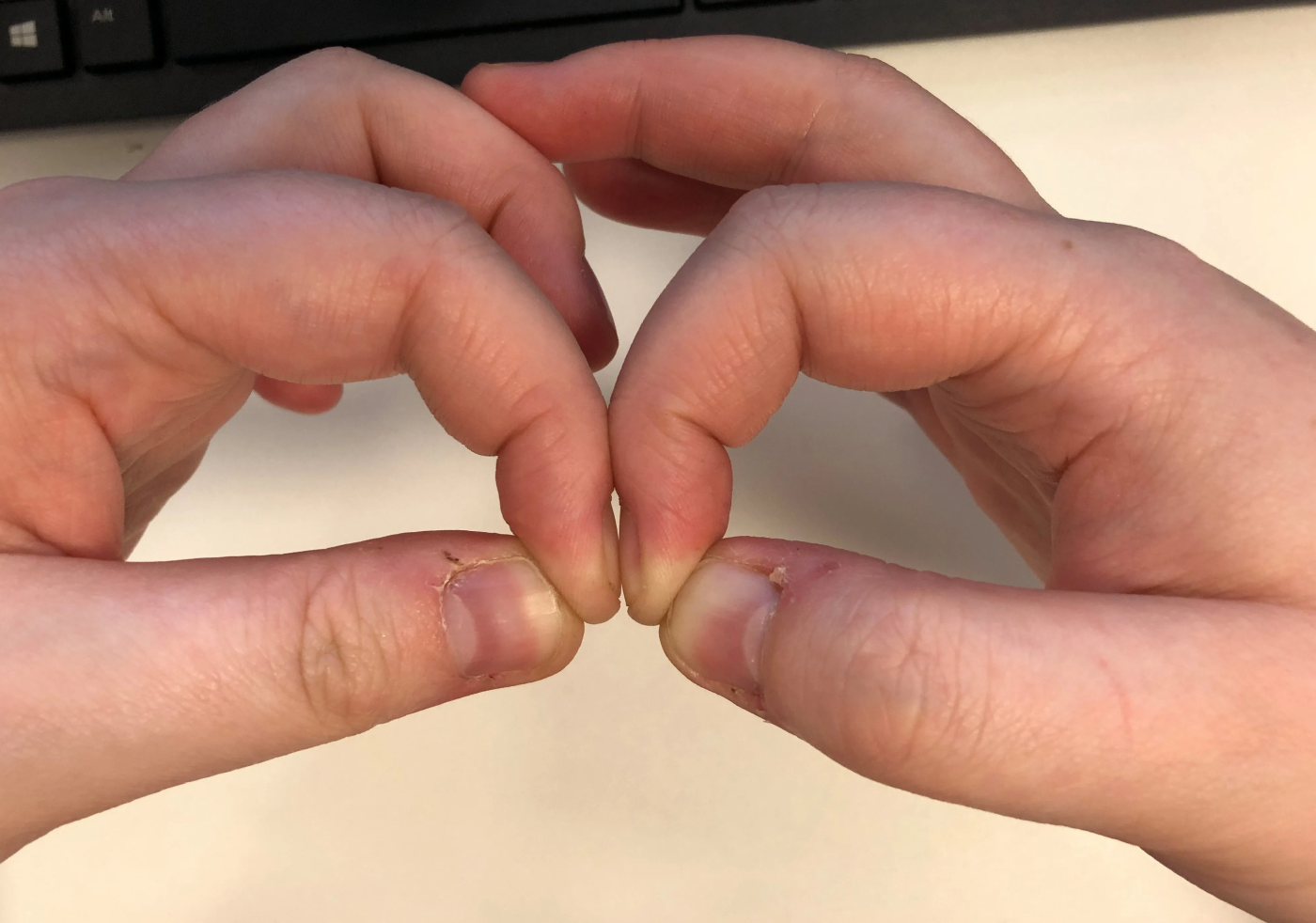What Is the Fingernail Test?
This test, often referred to as the “Schamroth Window Test,” involves pressing the tips of your index fingers together and checking for a small, diamond-shaped gap between your nails. If you can see the tiny space where light passes through, your nails appear normal. However, if that gap is missing, you could be experiencing a condition known as finger clubbing—a potential warning sign of underlying health problems, including lung cancer.
What Is Finger Clubbing?
Finger clubbing is a gradual change in the shape of the fingers and fingernails. Over time, the fingertips enlarge, and the nails become curved or rounded. This condition occurs when there is increased blood flow to the tissues at the tips of the fingers, often due to low oxygen levels in the blood.
While clubbed fingers can be associated with various health issues, one of the most concerning connections is with lung cancer. Studies show that approximately 35% of people with non-small cell lung cancer (NSCLC) and about 4% of those with small cell lung cancer (SCLC) exhibit signs of finger clubbing. This makes it a potentially significant early warning sign.
Why Is Early Detection So Important?
Lung cancer is one of the leading causes of cancer-related deaths worldwide. One of the primary reasons for its high mortality rate is late detection—by the time symptoms like persistent coughing or chest pain appear, the disease is often in an advanced stage. Detecting lung cancer early dramatically increases the chances of successful treatment.
For example, the five-year survival rate for localized lung cancer (cancer that hasn’t spread beyond the lungs) is about 60%. However, once the cancer spreads, survival rates drop significantly. That’s why being aware of subtle signs, like changes in fingernails, can be crucial.
A Real-Life Example: How This Test Saved a Life
Many people remain unaware of finger clubbing and its link to lung cancer until they experience it firsthand. One such case is Brian Gemmell, a man who had no other symptoms but noticed that his fingers appeared swollen. Upon performing the fingernail test, he realized the diamond-shaped gap was missing. Concerned, he visited his doctor, who referred him for a chest X-ray. To his shock, he was diagnosed with early-stage lung cancer.
Because of the early detection, Brian underwent surgery before the cancer could spread, avoiding aggressive treatments like chemotherapy. His story serves as a powerful reminder of why checking for small changes in your body can make a significant difference.
Other Health Conditions Associated with Finger Clubbing
While lung cancer is a major concern, finger clubbing is not always a sign of cancer. It can also indicate other serious health conditions, including:
- Chronic Lung Diseases – Conditions like chronic obstructive pulmonary disease (COPD), pulmonary fibrosis, and bronchiectasis can lead to clubbed fingers due to prolonged oxygen deprivation.
- Heart Disease – Congenital heart defects, bacterial endocarditis (infection of the heart lining), and other cardiovascular issues can cause finger clubbing.
- Liver Disease – Some liver disorders, especially cirrhosis, are associated with finger clubbing.
- Inflammatory Bowel Disease (IBD) – Conditions such as Crohn’s disease and ulcerative colitis have also been linked to clubbing in some cases.
Should You Be Worried About Your Fingernails?
If you notice clubbing in your fingers, don’t panic—but do consult a doctor. While the condition doesn’t necessarily mean you have cancer or another serious illness, it’s always best to get checked. A healthcare professional may recommend further tests, such as chest X-rays, CT scans, or lung function tests, to determine the underlying cause.
Other Signs of Lung Cancer to Watch For
In addition to checking your nails, be mindful of other early warning signs of lung cancer, including:
- Persistent cough that doesn’t go away
- Coughing up blood or rust-colored sputum
- Shortness of breath
- Unexplained weight loss
- Chest pain that worsens with deep breathing or coughing
- Hoarseness or voice changes
- Fatigue or weakness
- Recurring lung infections, such as pneumonia or bronchitis
How to Reduce Your Risk of Lung Cancer
While lung cancer can happen to anyone, certain lifestyle choices and environmental factors can increase or decrease your risk. Here’s how you can protect yourself:
- Quit Smoking – Smoking is the leading cause of lung cancer, responsible for about 85% of cases. If you smoke, quitting significantly reduces your risk.
- Avoid Secondhand Smoke – Even if you don’t smoke, prolonged exposure to secondhand smoke can be harmful.
- Reduce Exposure to Carcinogens – Workplace exposure to chemicals like asbestos, radon, and diesel exhaust increases cancer risk.
- Maintain a Healthy Diet – A diet rich in fruits and vegetables, particularly those high in antioxidants, can support lung health.
- Exercise Regularly – Staying active improves lung function and overall health.
- Get Regular Screenings – If you’re at high risk, annual lung cancer screenings (such as low-dose CT scans) can help detect problems early.
Final Thoughts: A Life-Saving Test in Seconds
The fingernail test is a simple, quick, and non-invasive way to check for early signs of a serious health condition. While not a definitive diagnosis, it serves as an important early warning signal for lung cancer and other diseases.
If you notice that your diamond-shaped gap is missing, don’t ignore it. Schedule an appointment with a healthcare provider to rule out any underlying issues. Early detection saves lives—and sometimes, it starts with something as small as looking at your fingernails.

